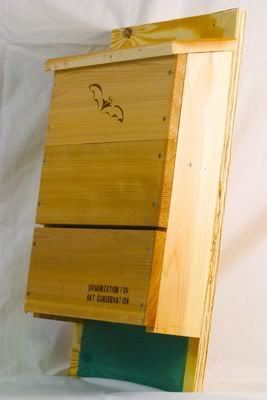
Source
How And Where To Put Up A Bat House
In Northwestern states, bat houses need at least six to eight hours of direct sun daily. It is very important for nursery colonies to raise their young under warm conditions. You should even paint your bat house black to absorb more heat. Use a non-toxic, latex paint for your house and only paint the outside. Remember that where you mount your bat house plays a major role in the internal temperature. Houses can be mounted on such structures as poles, sides of buildings and tall trees without obstructions. Houses placed on poles and structures tend to become occupied quicker than houses placed on trees. Houses should face south to southeast to take advantage of the morning sun. Your bat house should be mounted at least 15 feet above the ground, the higher the house the greater the chance of attracting bats. Bats return from migration and awaken from hibernation as early as March in most of the U.S., but stay active year-round in the extreme southern U.S. They will be abundant through out the summer and into late fall. Most houses used by bats are occupied in the first 1 to 6 months (during the first summer the bat house was erected). If bats do not roost in your house by the end of the second summer, move the house to another location.
What types of bats can I expect to see in my bat house in the Northwestern states?
Some of the most common bat species to occupy bat houses in northwestern states are as followed: pallid bat (Antrozous pallidus) a large pale colored bat with large ears, little brown bat (Myotis lucifugus), big brown bat (Eptesicus fuscus), Yuma myotis (Myotis yumanensis), and Mexican free-tailed bat (Tadarida brasiliensis), all of which are light to dark brown in color. For more information on identifying bats check out "Stokes Beginners Guide to Bat Identification."
No comments:
Post a Comment